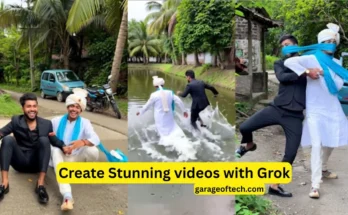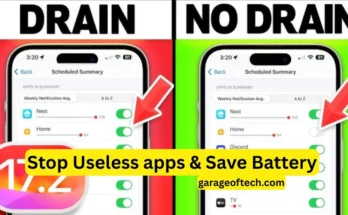With the rapid evolution of smartphone technology, modern Android phones are equipped with increasingly powerful camera sensors. However, achieving professional, DSLR-like results often requires more than just a good camera lens. Knowing how to tweak android camera settings and finding the right app to enhance these settings is essential. This article will walk you through the best apps to improve your Android photography, focusing on optimizing mobile camera settings and discovering what truly makes for the best camera of an Android phone.
Why Choose a Camera App for Your Android Phone?
Built-in camera apps on Android phones are reliable for casual photography, but they often lack advanced controls and processing power found in DSLR cameras. Dedicated camera apps offer:
- Advanced Settings: Control over exposure, focus, ISO, and shutter speed—features typical of professional DSLR cameras.
- Enhanced Processing: AI and machine learning are used to process images in a way that brings out vibrant colors, better low-light performance, and sharper details.
- Customizability: The ability to personalize presets and settings to match different shooting conditions.
Best Camera Apps to Elevate Your Android Photography
1. Adobe Lightroom Mobile
Adobe Lightroom isn’t just for editing photos; it also has a built-in camera function that offers a variety of android camera settings. It allows for manual control over:
- Exposure and ISO: Perfect for shooting in different lighting conditions.
- Shutter Speed: Capture motion with precision or eliminate blur with fast settings.
- White Balance: Maintain accurate color temperature to ensure natural tones.
With its built-in filters and presets, you can achieve DSLR-like results directly on your Android device.
2. Camera FV-5
Camera FV-5 is a professional camera app that gives you almost the same level of control as a DSLR. The app offers features that let you tweak mobile camera settings such as:
- Manual Focus: Achieve precise focusing for macro or landscape shots.
- RAW Capture: Preserve every detail for post-processing without quality loss.
- Exposure Bracketing: Create HDR images by merging multiple exposures.
This app is ideal for those who want to push their Android phone to its photographic limits, making it feel like the best camera of an Android phone.
3. Open Camera
For users seeking a free, open-source solution, Open Camera is a powerful choice. It provides extensive customization options, allowing you to adjust android camera settings for optimal results:
- Face Detection: Enhance portrait shots with automatic adjustments.
- Scene Modes: Adapt settings for various situations such as night, beach, or sports.
- HDR Mode: Capture high-dynamic-range photos that rival DSLR quality.
Optimizing Your Mobile Camera Settings for Better Results
Choosing the right app is only the first step. Understanding how to fine-tune mobile camera settings can make a significant difference in your photo quality. Here’s how to get the most out of your Android camera:
1. Adjusting ISO Sensitivity
ISO measures the sensitivity of your camera sensor to light. A lower ISO (100-200) is ideal for bright environments, while a higher ISO (800+) can help in low-light conditions. However, too high an ISO may introduce noise, so balance is key.
2. Setting the Shutter Speed
Shutter speed determines how long your camera’s sensor is exposed to light. For capturing fast-moving subjects without blur, a faster shutter speed is essential (e.g., 1/1000s). For low-light or artistic shots, a slower shutter speed (e.g., 1/30s) can create beautiful effects such as light trails.
3. White Balance Control
White balance ensures colors are rendered correctly by compensating for different lighting conditions. Choose the right preset (e.g., daylight, cloudy, or fluorescent) or adjust manually for more precision. Apps like Camera FV-5 allow for fine-tuning, giving your photos natural color representation akin to DSLR images.
Additional Features to Look for in a Camera App
- AI-Powered Enhancements: Apps like Adobe Lightroom Mobile use AI to automatically enhance your photos, improving lighting and sharpness with one touch.
- Histogram Display: A tool for understanding exposure distribution and making sure your photo isn’t under or overexposed.
- Lens Blur and Bokeh Effects: Mimic the depth-of-field effects found in DSLRs by focusing sharply on the subject while blurring the background.
Best Practices for Using Camera Apps on Android
1. Use Pro Mode Frequently
Many Android phones come with built-in “Pro” modes that offer greater control over android camera settings. However, third-party apps often expand these capabilities, making it easier to achieve specific photographic goals.
2. Experiment with RAW Format
Apps that support RAW photography, like Camera FV-5, give you greater flexibility in post-editing. The uncompressed format ensures maximum detail and color data, allowing for professional adjustments using editing software.
3. Leverage Gridlines for Composition
Many apps offer gridlines (rule of thirds, golden ratio) that help you compose your shots more effectively, ensuring balanced and visually appealing results.
Choosing the Right App for Your Needs
Whether you’re a photography enthusiast or just looking to improve your vacation photos, the right app and mobile camera settings can make all the difference. Adobe Lightroom Mobile is perfect for those who want a robust all-in-one solution, while Camera FV-5 caters to users needing advanced manual control. For those who prefer a free option with decent flexibility, Open Camera is a great choice.
Conclusion
By leveraging the power of AI and mastering android camera settings, you can turn your Android phone into a tool capable of producing images rivaling DSLR quality. Start exploring these apps and settings today, and discover just how much potential your phone camera holds.



